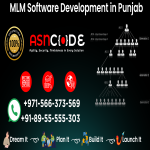Introduction
The software development landscape is constantly evolving, driven by technological advancements and changing market demands. Staying ahead of the curve is crucial for developers and businesses alike. In this blog, we’ll explore the top 10 software development trends that are shaping 2024, providing insights into each trend and its potential impact on the industry.
1. Artificial Intelligence and Machine Learning Integration
👉 AI and ML continue to revolutionize software development by enabling predictive analytics, automating tasks, and enhancing user experiences. From chatbots and virtual assistants to sophisticated data analysis, AI and ML are becoming integral components of modern software solutions. Companies leveraging these technologies can gain a competitive edge through improved efficiency and innovation.
2. Low-Code and No-Code Development
👉 The demand for rapid application development has led to the rise of low-code and no-code platforms. These tools allow developers and non-developers alike to create applications with minimal coding effort, accelerating the development process and reducing costs. They are particularly beneficial for startups and small businesses looking to launch products quickly.
3. DevOps and Continuous Delivery
👉 DevOps practices, which emphasize collaboration between development and operations teams, are becoming the norm. Continuous delivery (CD) ensures that software updates are released frequently and reliably. This trend enhances the speed and quality of software releases, making it easier for companies to respond to user feedback and market changes.
4. Cybersecurity Enhancements
👉 With the increasing number of cyber threats, cybersecurity is a top priority for software developers. Advanced security measures, including multi-factor authentication, encryption, and AI-driven threat detection, are being integrated into software development processes. Ensuring the security of applications is crucial to maintaining user trust and compliance with regulations.
5. Cloud-Native Development
👉 Cloud-native development focuses on building applications specifically designed for cloud environments. This approach leverages microservices architecture, containerization (e.g., Docker), and orchestration tools (e.g., Kubernetes) to create scalable, resilient, and agile software solutions. Cloud-native applications can efficiently handle varying loads and are easier to manage and deploy.
6. Edge Computing
👉 Edge computing brings computation and data storage closer to the location where it is needed, reducing latency and improving performance. This trend is particularly important for applications requiring real-time processing, such as IoT devices, autonomous vehicles, and smart cities. By processing data at the edge, companies can deliver faster and more reliable services.
7. Progressive Web Apps (PWAs)
👉 PWAs combine the best features of web and mobile applications, providing users with a seamless and engaging experience. They can be accessed via browsers but offer functionalities similar to native apps, such as offline access, push notifications, and fast loading times. PWAs are cost-effective and can reach a wider audience without the need for separate development for different platforms.
8. Blockchain Technology
👉 Blockchain is being integrated into various software applications to enhance security, transparency, and traceability. Beyond cryptocurrencies, blockchain technology is used in supply chain management, healthcare, finance, and more. It ensures data integrity and enables decentralized applications (dApps), opening new possibilities for innovation.
9. 5G Technology
👉 The rollout of 5G networks is set to revolutionize software development by enabling faster and more reliable internet connections. This technology supports the development of advanced applications in areas such as augmented reality (AR), virtual reality (VR), IoT, and autonomous vehicles. Developers can create more data-intensive and latency-sensitive applications with the power of 5G.
10. Remote Work Tools and Collaboration Software
👉 The shift towards remote work has accelerated the development and adoption of collaboration tools. Software that facilitates remote communication, project management, and team collaboration is in high demand. Features like video conferencing, real-time document editing, and virtual workspaces are essential for maintaining productivity and cohesion in remote teams.
Conclusion
As we move through 2024, these trends highlight the dynamic and innovative nature of the software development industry. Staying informed about these trends can help developers and businesses adapt, innovate, and thrive in an ever-changing technological landscape. By embracing these advancements, you can ensure that your software solutions are cutting-edge, secure, and efficient.





